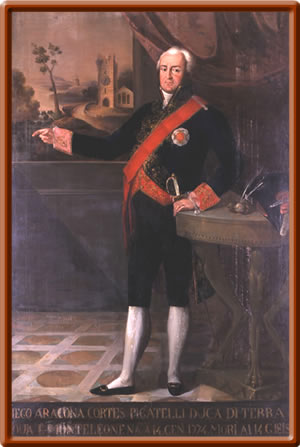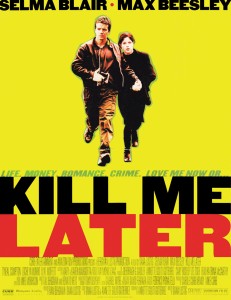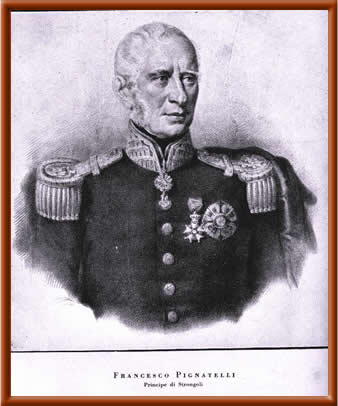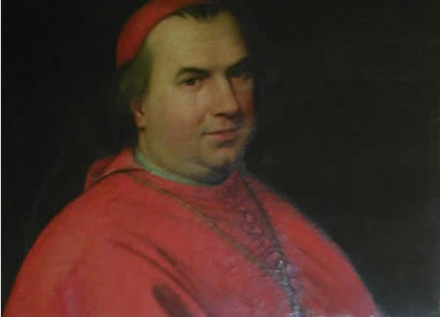Biolase Technology Inc. Chief Executive Federico Pignatelli knows what he’s getting into as he takes the reins of the Irvine-based dental device maker on a permanent basis.
Biolase has been “grossly mismanaged” in recent years, said Pignatelli, who’s also the company’s largest shareholder at about 5% of its stock.
Pignatelli stepped in as interim chief executive in August and got the permanent post at the end of September.
He’s the company’s fourth leader in the past three years.
Pignatelli brings some flair to Biolase, which early on was expected to have a big impact on dentistry but hasn’t lived up to expectations.
A native of Rome, Pignatelli’s biography describes him as being a descendent of one of Italy’s most noble and ancient families. He’s said to have ties to Pope Innocenzo XII of the late 1600s.
Pignatelli also is founder of New York’s Art & Fashion Group, an advertising services company.
At Biolase, Pignatelli aims to reverse declining sales and losses with a restructuring that’s expected to include the addition of distributors and salespeople.
Biolase makes lasers that are used by dentists and dental surgeons to cut bone and soft tissue in treatments for gum disease and endodontics, or treating problems deep inside teeth.
The restructuring and a recent big order has Biolase expecting profits soon.
“I want revenue to grow again, not contract as it has the past four years,” Pignatelli said.
Biolase’s revenue is down about 40% since 2006. The company has recorded annual losses ranging from $4.7 to $9.1 million from 2006 to 2009.
Cuts
Recent layoffs—which included the elimination of 20 positions, leaving 140 workers companywide—lowered Biolase’s adjusted earnings break-even point by about 30% to $32 million in yearly revenue.
It now “becomes highly likely” that Biolase will be profitable in the current quarter and beyond, Pignatelli said.
Boosting that likelihood is a recent $9 million order for dental lasers from Henry Schein Inc., Biolase’s Melville, N.Y.-based distributor. That deal is expected to be completed next June.
Biolase recently changed the terms of its deal with Henry Schein, clearing the way for the company to strike pacts with other distributors.
Biolase’s relationship with Henry Schein has been trying at times. In 2006, it signed a multiyear, exclusive deal with the distributor in North America. Some analysts soon said that Henry Schein’s sales people were reluctant to promote Biolase’s Waterlase laser because dentists were unfamiliar with the product.
“The issue was that we were dealing on an exclusivity basis with one distributor only, and that was a business model that did not work,” Pignatelli said. “We are back in control of our destiny.”
Biolase already has a new deal with Benco Dental Supply Co., a Pittston, Pa.-based company that Pignatelli called the “fastest growing distributor in the U.S.”
“We will deal with any distributor that wants to be in the high-tech field using laser dentistry,” he said.
The company plans to seek distributors in regions where Biolase doesn’t have strong sales on its own, Pignatelli said.
Biolase plans to grow its own sales force from 20 people to 35 by the first quarter.
Pignatelli said he also hopes to revive Biolase’s shares, which have fallen 95% in the past four years.
“I’m all about correcting that,” he said. “I am on the frontline to rebuild shareholder value.”
So far this year, Biolase shares are down 22% with a recent market value of about $35 million.
The device maker mainly flies under Wall Street’s radar. Only one analyst, Dalton Chandler of New York-based Needham & Co., currently tracks it. Chandler didn’t respond to a request for comment.
Pignatelli said that one of his goals is to bring more attention to Biolase from Wall Street.
“Obviously, my desire is to tell our story to analysts and investors, because with a changed business model we can go back to sustained growth and profitability’s around the corner.”
R&D
Biolase has kept its research and development intact.
The device maker spends about 10% of its revenue on what it calls “engineering and development,” according to a Securities and Exchange Commission filing.
“I believe that Biolase, (being) a technology company, has to have a strong R&D department,” Pignatelli said.
Eventually, Biolase plans to develop laser devices for other medical uses, such as eye care, according to Pignatelli.
Pignatelli was Biolase’s chairman from 1994 until 2006.
His chief executive predecessor, David Mulder, had been with Biolase since early 2009. Mulder succeeded Jake St. Philip, who came aboard in early 2008.
Pignatelli served as Biolase’s interim chief for a time in late 2007 and early 2008, after the departure of Jeffrey Jones.
His background includes serving as a managing director at investment banks Gruntal & Co. and Ladenburg Thalmann & Co.
Pignatelli plans to commute to Biolase from a home he has in Beverly Hills.









